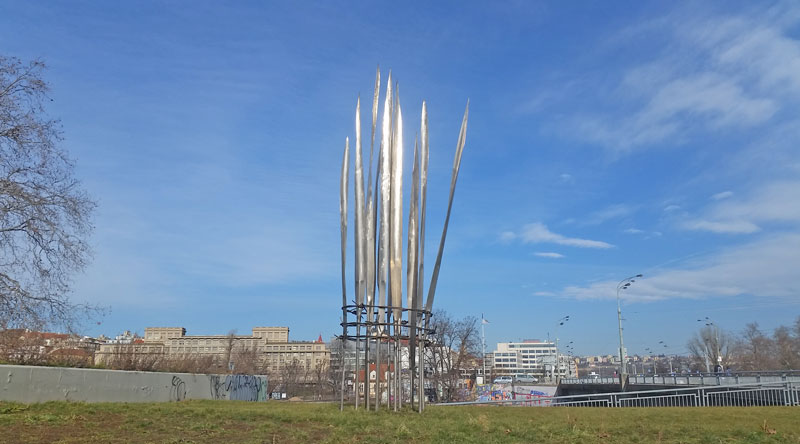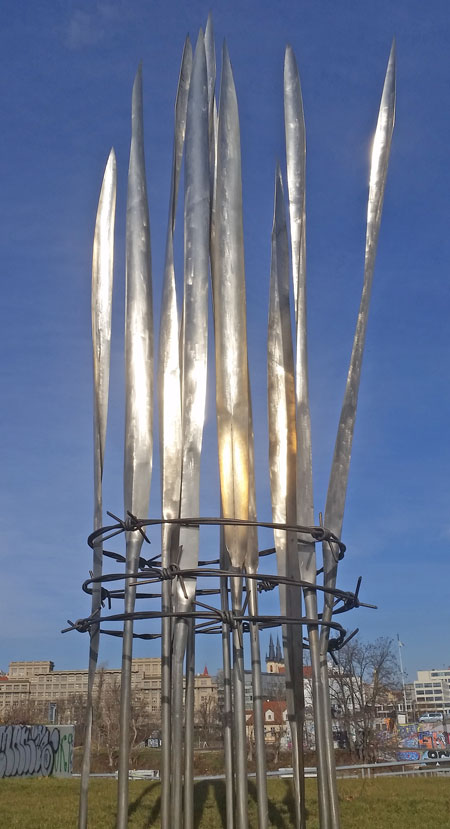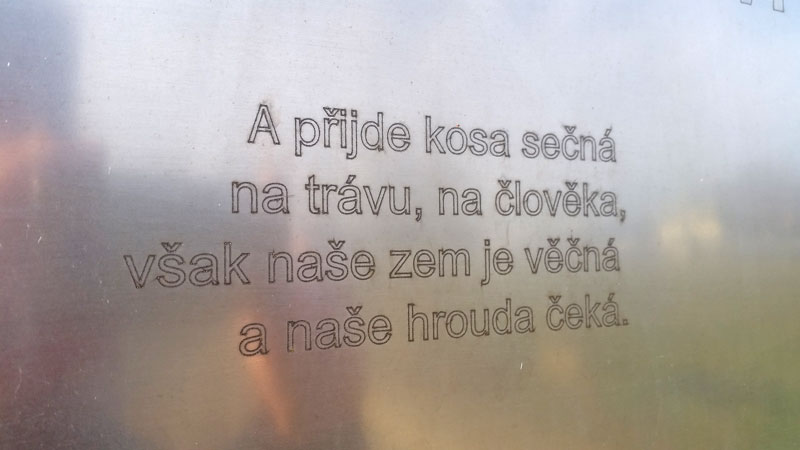Memorial to the Victims of Collectivisation
When you take individual private companies and bring them under State control that’s called Nationalisation. When you take an entire sector of production under State control that’s called Collectivisation.

In post-1948 Czechoslovakia the theory for agriculture was that as the State now owned the company or the land it occupied, the people are now motivated to work because they are working for a common cause and not just for a company owner. Then any money generated by the common people stays with the common people right? But what about if you are told where you can farm, what you can grow is decided by a committee and the state tells you how much you can sell it for. Yes, already you’re thinking Communism! Prague has a memorial to the victims of collectivisation in Czechoslovakia. Here’s why.
The Reason for Collectivisation
This was nothing new and in theory it looked good. In my grandparents generation the post-tsarist Soviet Union under Joseph Stalin tried this in the 1920s. By 1932 the famine caused by the breakdown in farming processes and management killed more than 10 million people. So you can imagine they said “right, bad idea, we’re not doing that again!”. Unfortunately for the Soviet population of the 1930s this wasn’t about food, it was about control of the population. They had to understand that the Communist Party had complete control over their lives.
After the Communists gained total political power in the 1948 Communist Coup they took less than a year to consolidate their position before Collectivisation reared it’s ugly head. The idea was held in such high esteem that one of the characters on the Prague Stalin Statue was dedicated to a collective worker.
To be fair we have to divide Collectivisation into two parts. The 1950s/60s saw the most upheaval in terms of land ownership and how people worked. In the 1970s/80s you pretty much knew what you were getting into so it was a little more forgiving. On this post I’ll concentrate on that first period i.e. post-war Czechoslovakia.
The Czechoslovakia Version

1951 was the year that the Collectivisation process started. If you thought Brexit was bad then imagine Collectivisation in 1950s started with the confiscation of the land which meant that 95% of all farms in the country were nationalised. Two problems arose immediately. The first was that farmers were told what they had to grow regardless of the type of land and what it had previously been used for. This resulted in low yield and food shortages. The second was that a career in agriculture was not popular and an entire generation of young farm workers left the fields for better paid work. It took two decades to sort out just these two issues.
Collectivisation or Victimisation
When we talk of the victims of Collectivisation it’s roughly split into two parts. Firstly is the upheaval of the agricultural sector and the almost total destruction of the local economy and a way of life that had supported both cities and the countryside for generations. Second was the relocation aspect because collective farms had their output measured so it stands to reason that good agricultural land produced more so the best land went to the communist supporters. Untold numbers of farmers were moved away from their own land (and homes) and sent to places where they would have to start from scratch. Their skills were expected to get produce out of land often not fit to be used. Workers were “assigned” to farms irrespective of their aptitude for the work. Many farmers who had previously been land owners were persecuted for not producing enough or punished for “hoarding” of food to feed their family and ultimately some chose suicide as a way out. It’s not until the 1970s that agricultural production returns to pre-WW2 levels and that’s if you can trust the numbers!
The Memorial and Plaque

This memorial is outside of the Agricultural Ministry in Tešnov and shows a cereal crop growing from the ground but enclosed with barbed wire. As with many memorials in the city it has the ring of acceptance of bad times and hoping for good times in the future. The Google Maps link is https://goo.gl/maps/FFiYx8w8q7RfdLyF8.
Specifically the plaque translates as:
“And the scythe will come to the grass, but to man our land is eternal and our land awaits”
Something Related or a Few Minutes Away
Memorials – Bike to Heaven (cyclist memorial)
Memorials – Memento Mori (suicide memorial)
Memorials – Ice Hockey Players
Politics – 1948 Communist Coup
Services – Which Prague Hilton?
Food and Drink – Kasarna Karlin
Food and Drink – Gastro Karlin Jidelna
